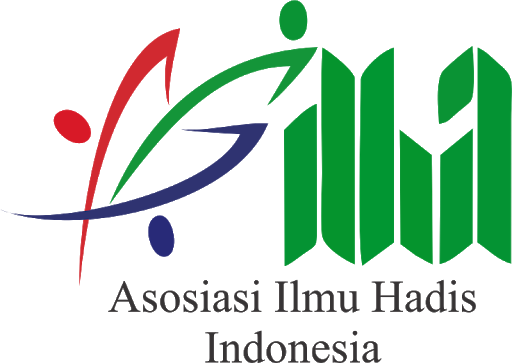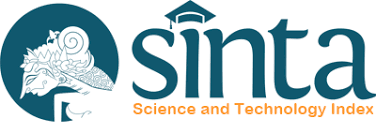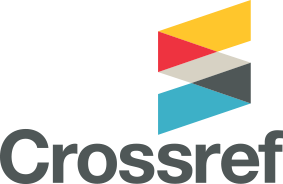The Concept of Pious Children in the Movie "Surau dan Silek": A Living Hadith Study
DOI:
https://doi.org/10.14421/livinghadis.2020.2350Keywords:
Living Hadith, Reception, Religious Characters, Surau dan Silek, Religious MovieAbstract
This article delves into the reception of prophetic hadith in the movie “Surau dan Silek”, bringing with itself an assumption that human activities result from the attempts to understand, either textually or contextually, to the Quran and hadith. Employing reception theory, this article finds that the reception of the hadith in the movie “Surau dan Silek” is mostly exegetical and functional. In some cases the text of the hadith appear as part of the dialogue. In some other cases, the audience will only see the figures’ understanding of certain hadith. In either way, the main theme of the hadith dealt with throughout the movie is ‘being a pious child’. The script introduces ‘pious children’ as one of the so-called ‘amal jāriyah (continuous, never ending rewards) and goes on with the quite detail narrative of the characters of the ‘pious children’. This in itself shows that there has been a transformation of religious ideas, from the silent, not moving text in arid manuscripts to the colorful, cheerful yet religious characters. It is the technological development that allows such visual transformation to go off. It thus provides the society with quite new alternative ways to access and further understand prophetic hadith.
 Abstract viewed: 1482 times
|
Abstract viewed: 1482 times
|
 PDF downloaded = 531 times
PDF downloaded = 531 times
 PDF Eng downloaded = 377 times
PDF Eng downloaded = 377 times
References
Abdullah, D. (2014). Musyawarah dalam al-Qur’an (Suatu Kajian Tafsir Tematik). Al Daulah, 3(2).
Adawiyah, M. (2017). Berbakti Kepada Orang Tua dalam Ungkapan Al-Qur’an (Pendekatan Teori Anti Sinonimitas). UIN Sunan Kalijaga.
Dewi, S. K. (2017). Fungsi Performatif dan Informatif Living Hadis dalam Perspekti Sosiologi. Refleksi, 2(2).
Fahriana, A. S. (2018). Pengambilan Keputusan Secara Musyawarah dalam Manajemen Pendidikan Islam: Kajian Tematik Al-Qur’an dan Hadis. Al-Hayat, 2(1).
Fahrudin. (2019). Kajian Hadis di Era Android (Telaah Aplikasi ‘Masuk Surga’ Karya Ahmad Luthfi Fathullah). Diroyah: Jurnal Ilmu Hadis, 4(1).
Kamaruddin, M.A., Kamal M.S.M., dan Ajmain. (2019). Media Sosial dan Dakwah Menurut Islam. Prosiding Seminar Sains Teknologi Dan Manusia, UTM.
Mahani, M. K. A. (2008). Buku Pintar Shalat: Pedoman Shalat Lengkap Menuju Shalat Khusyuk. Wahyu Media.
Muh. Alwi HS dan Amrina Rosyada. (2018). Fenomena Living Islam dalam Sinetron (Studi Atas Tuntunan Sebelum dan Setelah Pernikahan dalam Film Para Pencari Tuhan Jilid 3 Episode 19). Maghza: Jurnal Ilmu Al-Qur’an, 3(2).
Padjrin. (2016). Pola Asuh Anak dalam Perspektif Pendidikan Islam. Intelektualita, 5(1).
Qudsy, S. Z. (2016). Living Hadis: Genealogi, Teori, dan Aplikasi. Jurnal Living Hadis, 1(1).
Rafiq, A. (2014). The Receptionof the Qur’an In Indonesia. A Case Study of the Place of the Qur’an In A Non-Arabic Speaking Community. Univ. Temple.
Ratna, N. K. (2007). Estetika Sastra dan Budaya. Pustaka Pelajar.
Setiawan, M. N. (2008). Al-Qur’an Kitab Sastra Terbesar. Elsaq.
Solichah, A. S. (2017). Pendidikan Karakter Anak Berbasis Al-Qur’an. Mumtaz, 1(1).
Suryadilaga, M. A. (2014). Kajian Hadis di Era Global. Esensia, 15(2).
Yasir, H. S. A. (2003). Tafsir Kontekstual Al-Qur’an: Surat Al-Ma’un. Majlis Ta’lim Asy-Syakur.
Zemakhsyari dan Nilna Fadlillah. (2016). Software Ensiklopedi. Jurnal Studi Ilmu-Ilmu al-Qur’an Dan Hadis, 17(2).
CD Mausu'ah al-Hadis al-Syarif.
Minangkabau, Asro Sikumbang. Silek Tradisi Minangkabau dalam Perkembangan dan Perubahan Zaman. Diterbitkan dalam www.goodnewsfromindonesia.id/ diakses tanggal 12 Mei 2020.
Nasional, Departemen Pendidikan. (2008). Kamus Besar Bahasa Indonesia Pusat Bahasa Edisi Keempat, Jakarta: PT Gramedia Pustaka Utama.
Nurmansyah, Ihsan. (2019). Resepsi dan Transmisi Pengetahuan dalam Film Papi dan Kacung Episode 8-11: Sebuah Kajian Living Hadis. Al-Quds: Jurnal Studi Al-Qur’an dan Hadis, 3(2).
Published
Issue
Section
License
- Authors who publish with this journal agree to the following terms:
- Authors retain copyright and grant the journal right of first publication with the work simultaneously licensed under a Creative Commons Attribution License that allows others to share the work with an acknowledgement of the work's authorship and initial publication in this journal.
- Authors are able to enter into separate, additional contractual arrangements for the non-exclusive distribution of the journal's published version of the work (e.g., post it to an institutional repository or publish it in a book), with an acknowledgement of its initial publication in this journal.
- Authors are permitted and encouraged to post their work online (e.g., in institutional repositories or on their website) prior to and during the submission process, as it can lead to productive exchanges, as well as earlier and greater citation of published work.
















